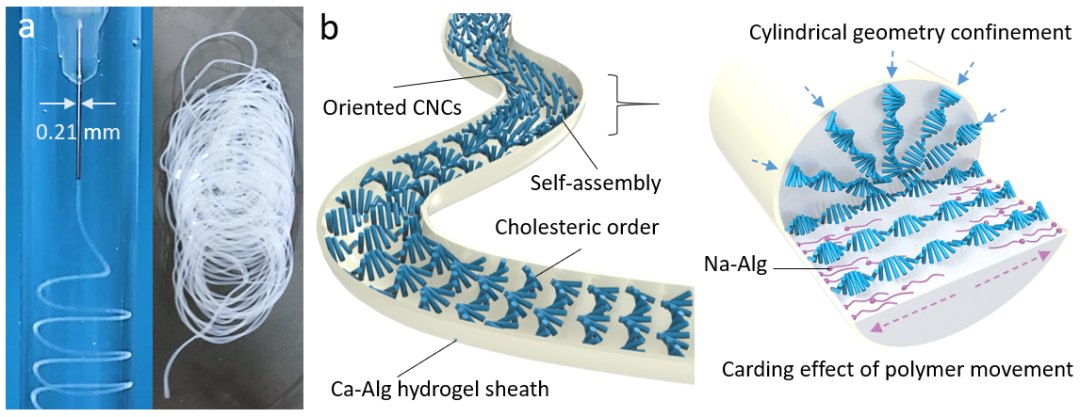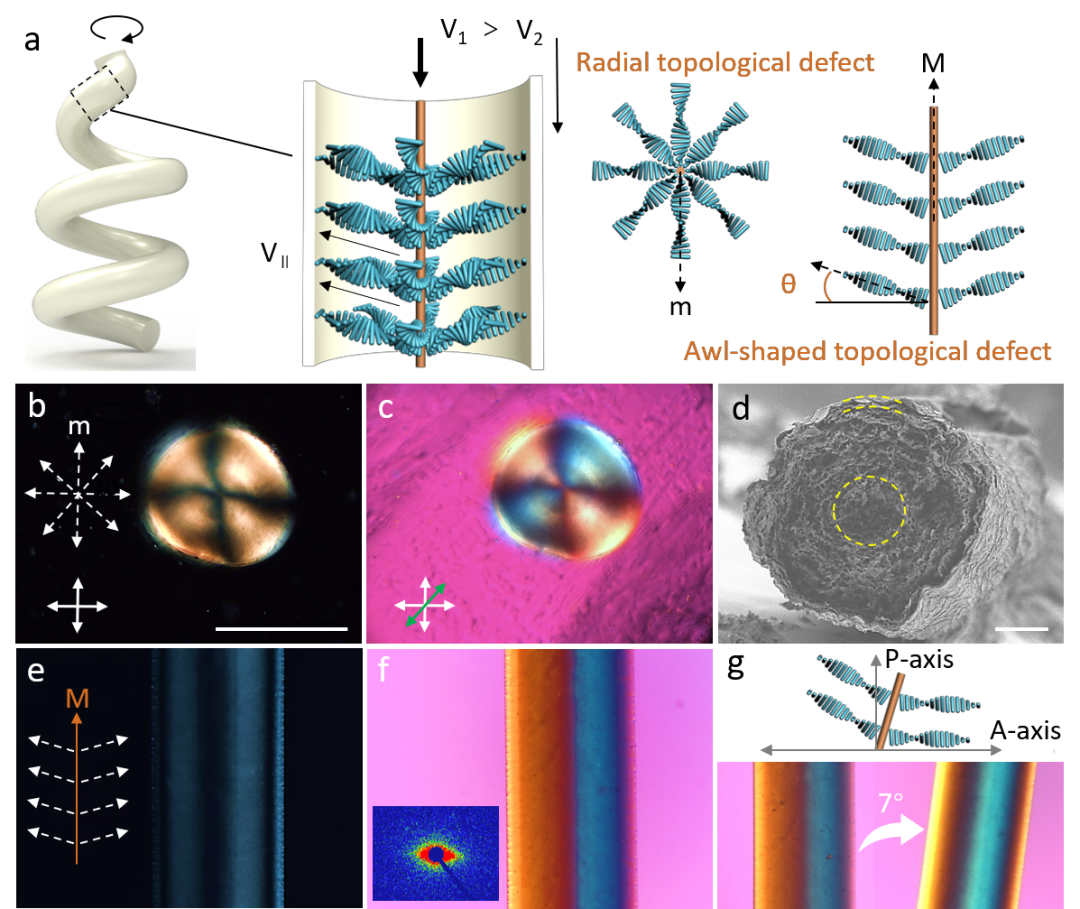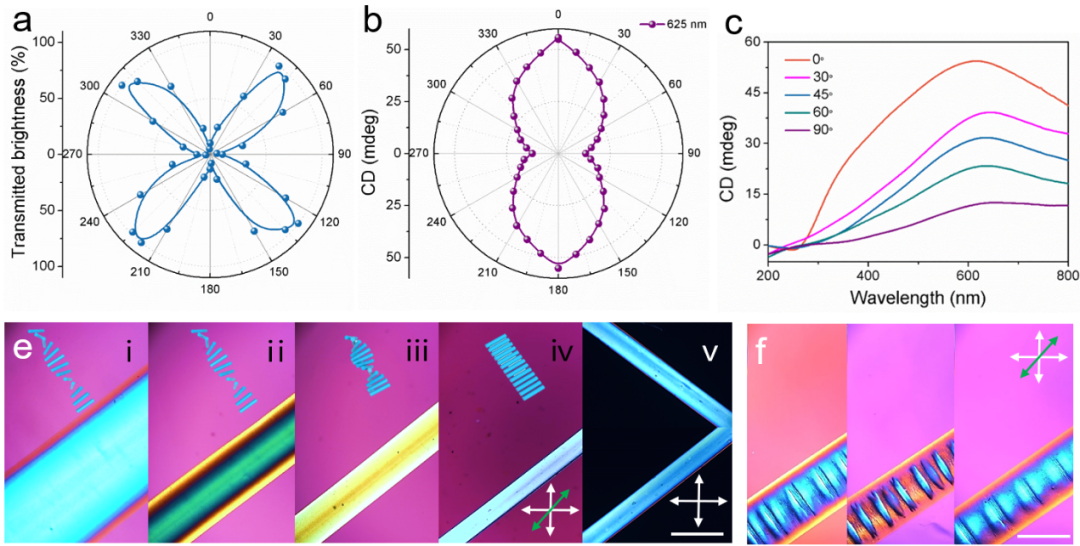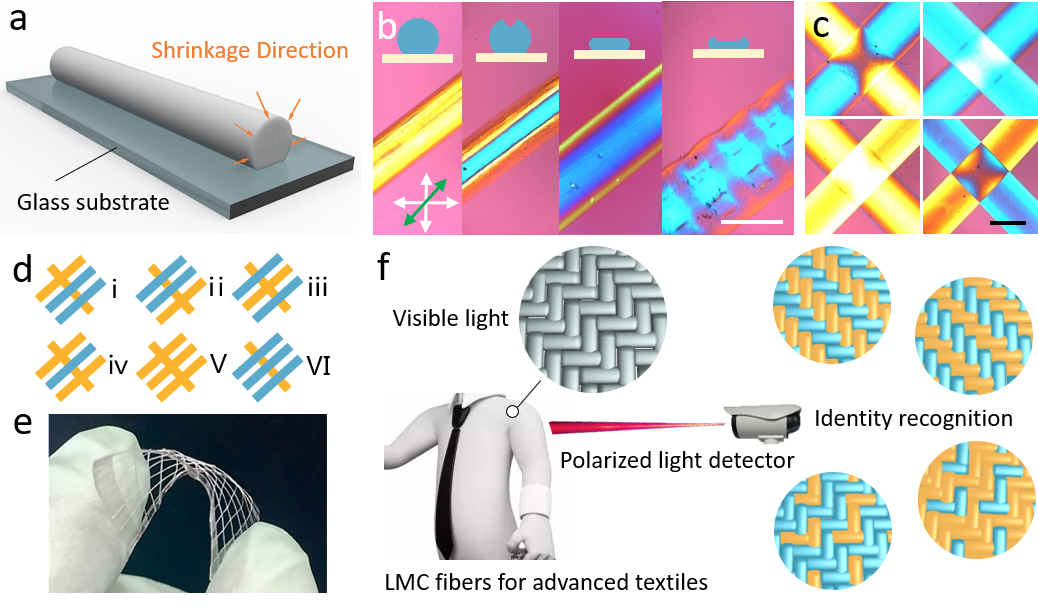Professor Wu Peiyi’s team: Multi-response nano-cellulose liquid crystal fibers for chiral optics and advanced fabrics
QQ Academic Group: 1092348845
Detailed
Chiral liquid crystal structures (cholesteric) are ubiquitous in living organisms. Re-engraving its unique structure and topology and constructing multifunctional optical materials has become a hot spot in current research. Cellulose nanocrystals (CNCs), a kind of biomass-derived nanorod-like materials with natural chirality, can spontaneously assemble into left-handed cholesteric liquid crystals, and are widely used in the fields of information encryption, optical coding, and optical data storage. Application prospects. Because of the liquid flow properties of colloidal liquid crystals, it is extremely challenging to construct a long-range and stable complex cholesteric liquid crystal structure in similar organisms. Therefore, the cholesteric liquid crystal structure formed by CNCs currently has only a single film form. How to obtain a stable and continuous topological configuration of man-made colloidal liquid crystals in space geometry (spherical geometry, cylindrical geometry, irregular geometry, etc.) is a subject of important scientific significance.
Cholesteric liquid crystals have a spherically symmetrical structure in a spherical geometry, which leads to omnidirectional optical properties, which can be used for three-dimensional optical scanning and imaging, laser resonators, etc. In contrast, the cylindrical geometry has an infinitely extending axially symmetric space in which cholesteric liquid crystals can form unique liquid crystal configurations. However, when the injection stream of CNCs solution enters the coagulation bath, the interface energy of the liquid-liquid interface tends to be minimized, causing the liquid tube to break to form droplets. It is very difficult to form a continuous and smooth liquid tube in the coagulation bath for the self-assembly of CNCs cholesteric liquid crystals. Therefore, the assembly behavior and optical properties of cholesteric liquid crystals in cylindrical geometry have not been systematically studied.
This work proposes a method of self-assembly of CNCs in a gel sheath formed in situ to prepare multi-layer super liquid crystal fibers with a continuous core-sheath structure on a large scale. Super liquid crystal fiber has a complex structure that spans multiple scales: long-range cholesteric liquid crystal sequence (nano-scale), three-dimensional topological configuration: radial radial configuration and axial wheat ear configuration (micro-scale) and continuous core -Sheath structure (macro scale). The rapid gelation of sodium alginate and Ca2+ in liquid-liquid is the key factor for large-scale preparation of super liquid crystal fibers. The super liquid crystal fiber exhibits the alignment stability of CNCs nanorods, the programmability of the cholesteric liquid crystal configuration, and the controllability of the polarization direction and intensity. Super liquid crystal fiber has unprecedented controllability in linear and circular polarization optics, providing an attractive fibrous material platform. Related work was recently accepted by Advanced Functional Materials under the title "Bioinspired Hierarchical Liquid-Metacrystal Fibers for Chiral Optics and Advanced Textiles".

Figure 1. Schematic diagram of the self-assembly of CNCs in the gel sheath formed in situ.
1. The tubular geometric constraint promotes the radial organization of CNCs cholesteric liquid crystal sequence to form a radial radial topology.
2. The flow velocity difference between the inside and outside of the tubular geometry drives the CNCs cholesteric liquid crystal sequence to shift along the circumference (offset angle of 7 degrees), forming an axial wheat ear-like topology.

Figure 2. Polarized optical and scanning electron microscopy characterization of CNCs cholesteric liquid crystals in tubular geometry.
3. The super liquid crystal fiber can simultaneously control linearly polarized light and circularly polarized light, and the control mode is semi-synchronous/semi-asynchronous.
4. The optical appearance of the super liquid crystal fiber has strong mechanical responsiveness, and the optical appearance exhibits obvious changes during the stretching and compression process.

Figure 3. Linear and circular polarization control and mechanical-optical responsiveness.
5. During the drying process, the liquid crystal configuration of the super liquid crystal fiber is programmable. The optical appearance of the super liquid crystal fiber can be customized at will according to specific requirements.
6. The dried super liquid crystal fiber has certain mechanical strength and flexibility, and can be woven at will. The storage of information can be realized through different weaving methods, and it can be used as an advanced fabric to identify a specific identity.

Figure 4. The programmability of the liquid crystal configuration during the drying process of the super liquid crystal fiber, and the application scenarios of the advanced fabric in life.
This work uses a simple microfluidic technology to form a hydrogel sheath in situ as a protective cover to ensure the rapid and continuous self-assembly of the internal CNCs to form a multi-layer super liquid crystal fiber with a core-sheath structure. Based on the unique liquid crystal configuration in the hydrogel sheath, the super liquid crystal fiber exhibits a unique optical appearance and can be used as a responsive fibrous material for chiral optical sensing, polarization encryption, advanced fabrics and other fields. In addition, this research is the first to systematically explore the self-assembly behavior and optical properties of cholesteric liquid crystals in a continuous microchannel geometry. This self-assembly strategy has universal applicability to other types of colloidal liquid crystals.
This subject was funded and supported by the National Natural Science Foundation of China (51733003). Liu Yanjun, a doctoral student at Fudan University, is the first author of the article, and the corresponding author is Professor Wu Peiyi.
Full text link:
https://onlinelibrary.wiley.com/doi/10.1002/adfm.202002193
This information is sourced from the Internet for academic exchange only. If there is any infringement, please contact us to delete it immediately.
- Previous: JACS | Application of
- Next: IF 26.8! Immune nano-e


 Academic Frontier
Academic Frontier